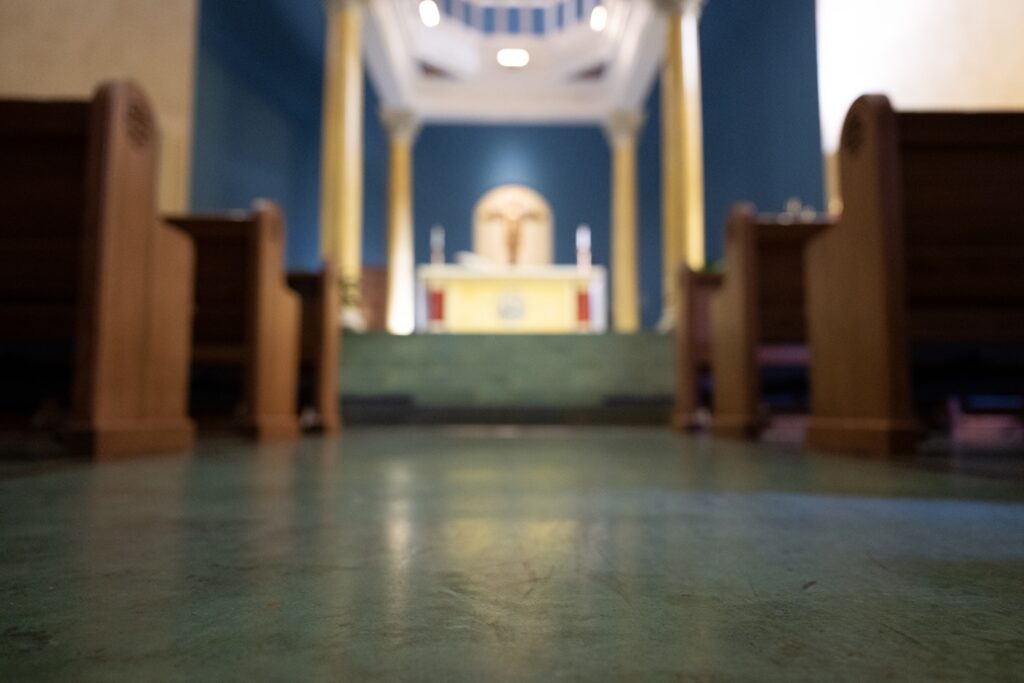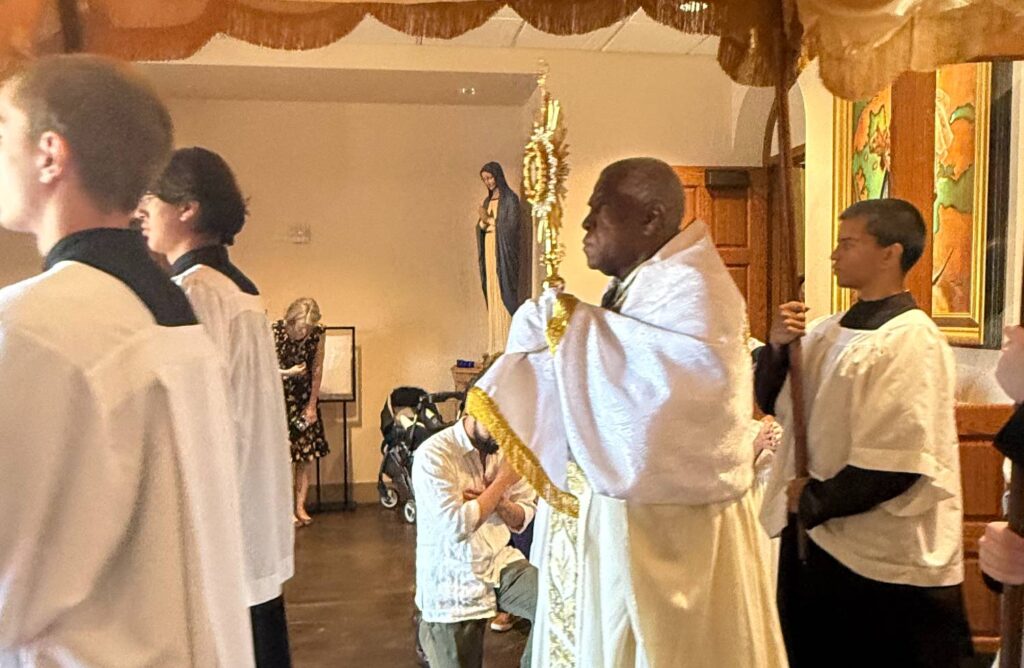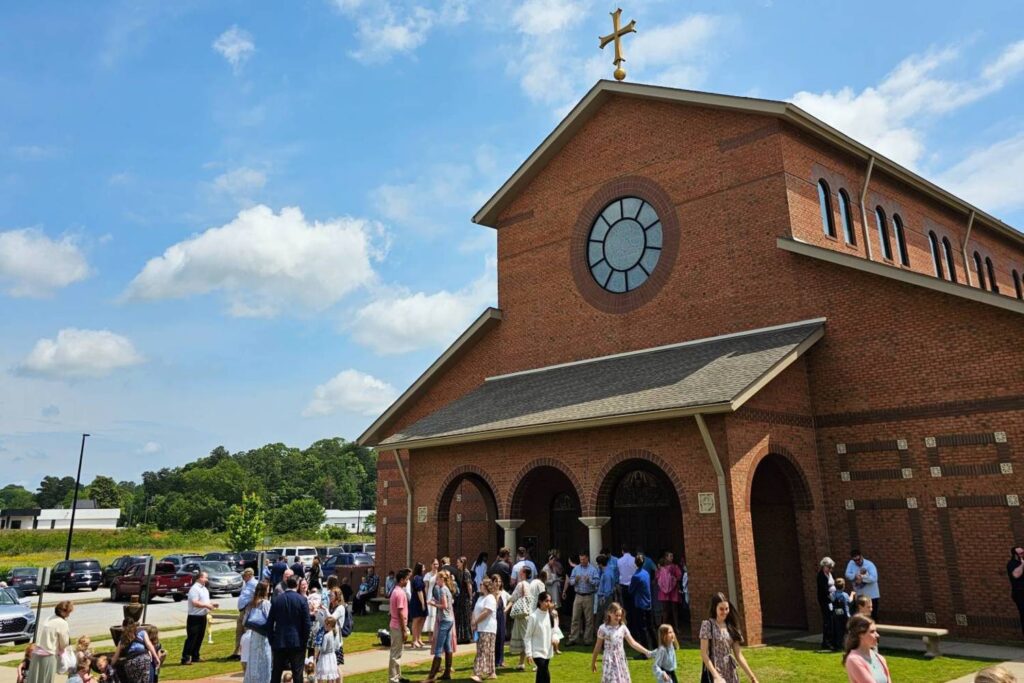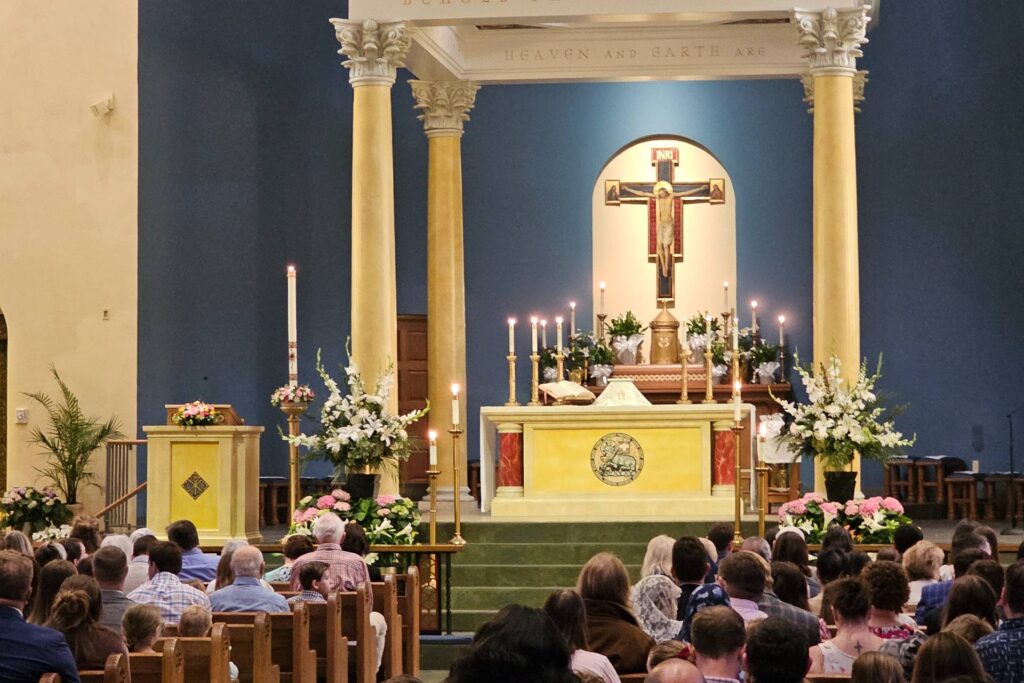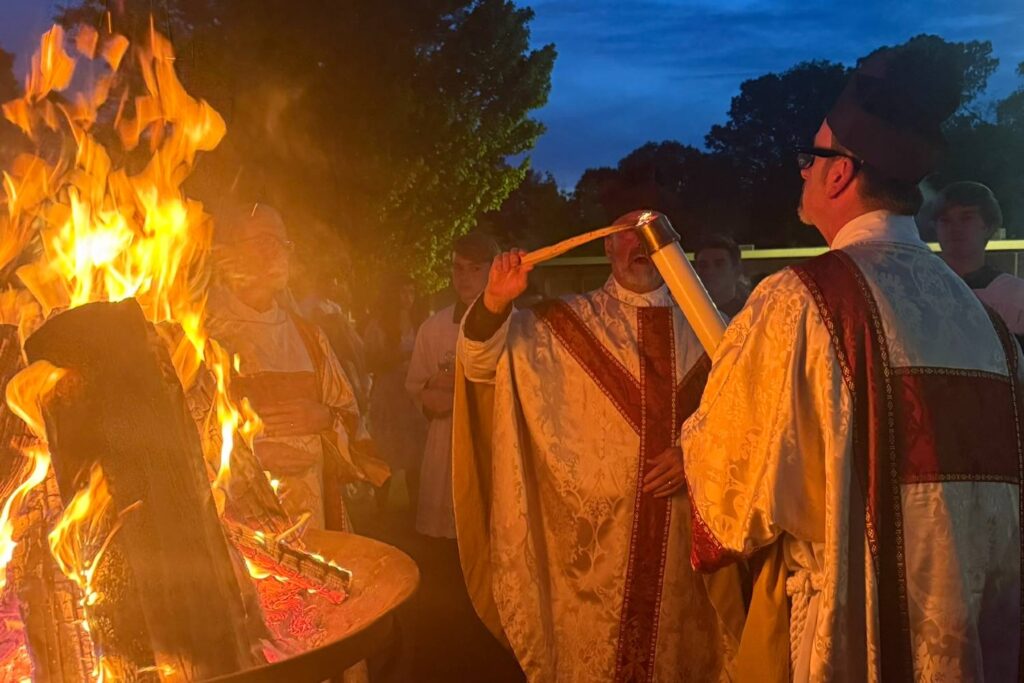Brothers and Sisters,
Last week I wrote about our worship being a “compendium of culture”. Over the next few weeks, I will share some thoughts on the different aspects of our worship.
Architecture. The building in which we worship is important to our experience of worship. Not only that, it reflects our theology and understanding of God and our relationship to him.
I remember reading about Native American culture. The writer observed that many of the Native Americans lived in round teepees placed in a circle, and that this was a reflection of their world view: that life was a great circle, a spiral, a never ending cycle. Christianity, on the other hand, is linear—it goes from beginning to end—from Alpha to Omega. So, we build in straight lines and our churches are linear, not circular.
The traditional Catholic church is cruciform. In other words, it is in the shape of a cross with the font at the back where the Christian pilgrimage commences and moves to the sanctuary and altar where the journey is fulfilled. The sanctuary symbolizes heaven where the lamb is on the throne (the throne being symbolized by the altar)
A Catholic church is centered on the altar where the saving sacrifice of Christ is re-presented. The priest faces the altar and the crucifix thus praying with his people as they turn to the Lord together. Of course the Mass may be celebrated facing the people, but there are problems with this: too often there is a tendency for the Mass to become a “performance“ by the priest, and for the prayers to be more directed to the people than to God.
The traditional Catholic church building is also lofty. It has “verticality” because our God is above and beyond us. The lofty ceilings of Cathedrals point upward and draw our eyes, our hearts and our minds upward. These aspects of architecture work on us even when we are unaware of them. The apprehension of beauty is deeper than words and so lifts us to the transcendent and draws us into worship.
Traditional architecture does all this, but it also provides us with a bridge to the great artistic, architectural and cultural heritage we enjoy as Catholics. The Romanesque architecture is a direct link to the early Roman churches that developed out of the cultural glories of the Roman Empire. This is part of our heritage as Western Christians and we do well do maintain it and pass it on as good stewards.
Your Pastor,
Fr. Longenecker
